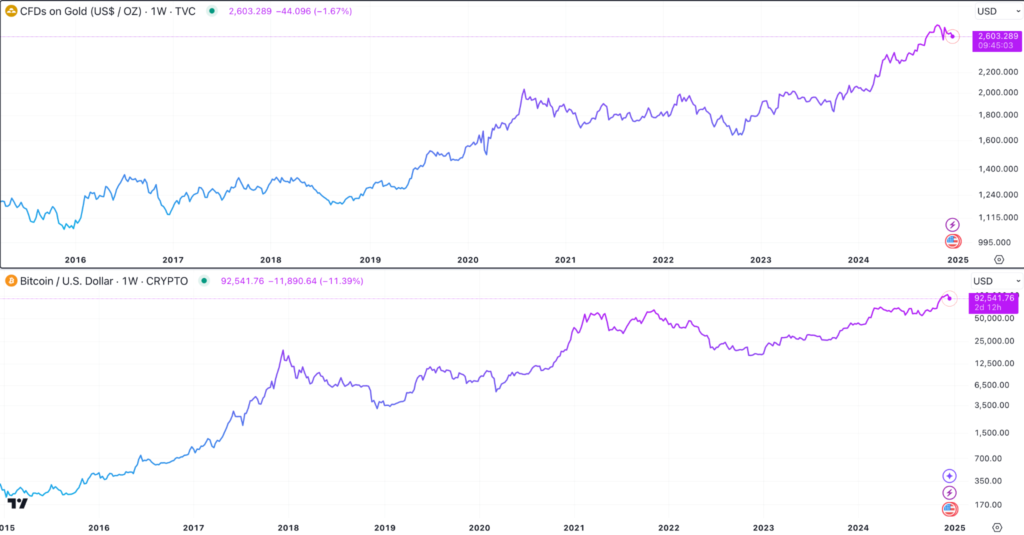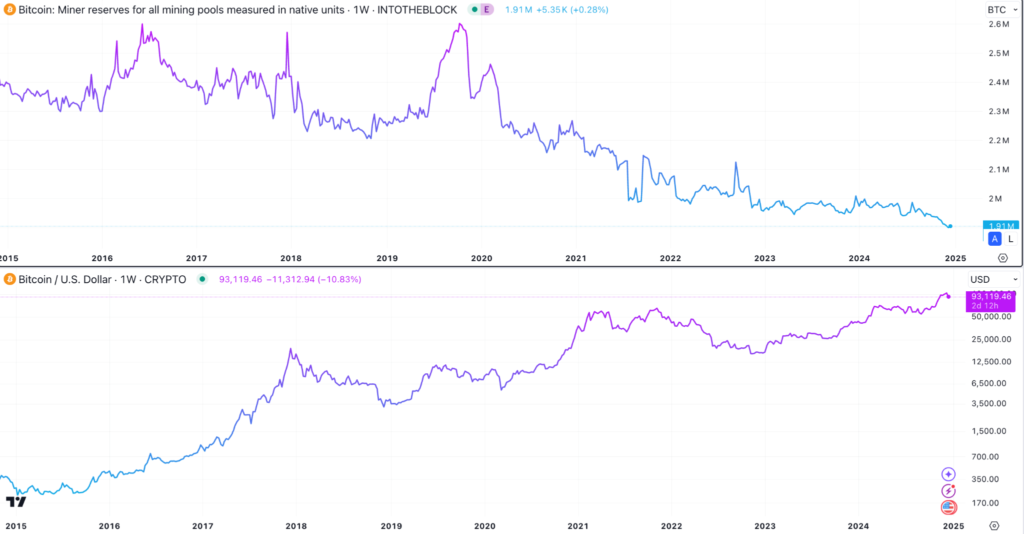There has been a rumor that Bitcoin price follows a 4-year cycle of ups and downs, with one year for each “season”. If this is true, then where are we now? Was 2024 a hot “summer”, signalling that all the opportunities are gone? Or was it only a warming spring after a long-lasting fall-winter years? And if so, what was 2023 then, when Bitcoin almost doubled in price? We’re not claiming that this theory is applicable for trading or investing purposes — it is more of a conspiracy theory. But is it? Let’s briefly look at just one factor: the circulating supply of Bitcoin.
Bitcoin’s finite supply
The total amount of Bitcoin is capped at 21 million, as outlined in its white paper. While some Bitcoin is lost forever (e.g. stored in inaccessible wallets), this doesn’t significantly impact the price. As of December 2024, over 19.9 million Bitcoin have been mined. Considering all the upcoming halvings — which cut the mining reward for each block in half — Bitcoin mining will continue until 2140! So it is never too late (at least until 2140…) to get involved.
Bitcoin’s finite supply is one reason the crypto community has speculated for years about it being “digital gold”. This idea gained further credibility on December 8, 2024, when the U.S. Treasury stated: “The primary use of Bitcoin appears to be as a store of value, meaning ‘digital gold’ in the world of decentralized finance (DeFi).” This acknowledgement highlights Bitcoin’s dual role as an investment asset and a savings tool. As shown by the chart below, Bitcoin and gold have started to correlate more over time, making Bitcoin less volatile (in percentage terms).

Government involvement
Bitcoin’s price depends not only on the overall health of the global economy but also on its adoption by governments. For example, El Salvador made Bitcoin a legal tender in 2021. Although not yet adopted by central banks, governments of the U.S., China, the U.K., Ukraine, Bhutan, Venezuela, Finland, Georgia, and Germany collectively own over 500,000 Bitcoin. Additionally, the U.S. plans to acquire at least a millionBitcoinin the coming years through purchases and mining. Pro-crypto President-elect D.J. Trump has said he’s going to “drill, baby, drill” for oil and ensure all remaining Bitcoin is “Made in the USA”. This could result in a surge in Bitcoin’s hash rate (a measure of mining activity) and increase the buying pressure for “digital gold“ by the world’s strongest economy.
Halving Effect
This year, Bitcoin halving took place on April 19. What happened the next day? Nothing — at least in terms of price. However, from that moment, miners started to receive half the reward they did the day before. The main question is when this will affect BTCUSD price. Have the price hikes of early 2023 and 2024 already factored in the halving? Or will the effects become visible next year?
On-chain data shows a drop in exchange-held Bitcoin supply from over 3.3 million in November 2022 to 2.9 million in January 2023. This reduction was one of the catalysts for Bitcoin’s 2023 price jump. Throughout 2023, exchange reserves fluctuated between 2.9 million and 3.06 million. Starting in February 2024, we observed a steady decline in both exchanges’ and miners’ reserves. Miners typically sell to exchanges, which should increase reserves. However, the continuous decline in exchange-held Bitcoin supply indicates that investors are buying more than miners are producing. By December 2024, exchange reserves dropped below 2.7 million, while miners’ reserves fell to around 1.9 million. Historically, miners have sold heavily after each price spike, as seen in early 2018 and mid-2021. They are selling again now.

Historical patterns
Bitcoin price history suggests that every major surge occurs about a year after each halving. The 2012 halving led to a price of more than $1,240 in 2013. The 2016 halving resulted in a 2017 bull run, peaking at nearly $20,000. Similarly, the 2020 halving came before a rise to over $68,000 in 2021.
One more observation: In 2017, there was only one spike — a clear (depending on interpretation) head-and-shoulders pattern, signalling a bearish trend reversal. In 2021, we saw a bearish double top on a weekly chart, followed by hidden bearish divergences on both RSI (Relative Strength Index) and MACD (Moving Average Convergence Divergenced), resulting in a price drop. Will history repeat with one or two spikes in this cycle? Or will new patterns emerge? Only time will tell.














